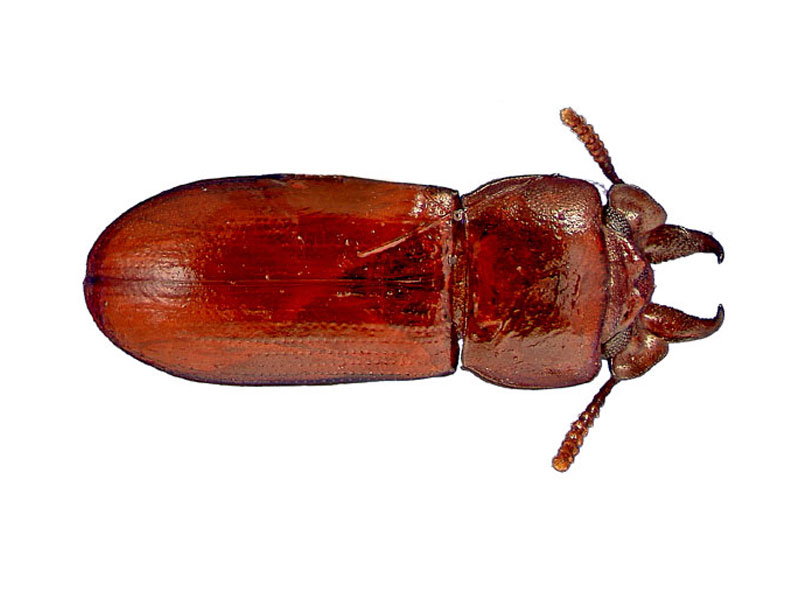Broad-horned flour beetle Infestation

The Broad-horned flour beetle is from the family of the flower beetles, as its name shows. It is found in areas, where flours, cereals, porridge oats, etc products are stored as they are the preferred food source of this pest. Once infesting a product, the beetle will use every little crack or crevice, inside or around that product, to find shelter or a hiding place.
The Broad-horned flour beetle, just like the majority of the stored product insects, is not dangerous to people or pets, however, the infested products should not be consumed. It is considered a secondary grain pest, which increases the amount of damage done by the primary grain pests (e.g. mice, rats).
Broad-horned flour beetle control

Just like the other stored product insects, the Broad-horned flour beetle can be found with the typical infestation signs when the infestation size increases or using monitoring and trapping solutions, such as adhesive traps, bait bags, pitfall traps, and insect probe traps. Regular checks of the stored flours, porridge oats, rice bran, etc… products that may be potentially infested by the beetle, should be carried out and they should be kept in glass jars (if in domestic premises) or in tough and durable containers with shiny surface, so that there is a limitation for the pest to get to the products.
If an infestation is already present and it cannot be controlled using the methods stated above, then treatments such as the heat treatment may be used. It is a ecologically-friendly treatment that uses high temperature to eradicate all life stages of the pest and works for other pests such as booklice, bed bugs, carpet mites, etc… It is also a good solution in domestic and commercial premises if there is a dampness problem present. Insecticides can also be used in cases of Broad-horned flour beetle infestations on the fabric of the stores and all potential hideouts of the pest. If insecticides are not an option, then grain protectant can be used.
Prime Pest Control offers our residential and business customers tailored solutions for control, treatment and prevention of the Broad-horned flour beetle in all districts of London – North, South, West and East, as well as in the surrounding counties. Our British Pest Control Association (BPCA) trained pest technicians will come and inspect your home or business premises and will provide you with a custom-made action plan tailored to your personal or business needs and requirements.
About Broad-horned four beetles
The Broad-horned flour beetle (Gnatocerus cornutus) is a popular species of flour beetle. It is found internationally and can infest both domestic and commercial premises, where products such as flours, oats, cereals or rice bran are stored. This beetle looks similar to the other members of the flour beetles family – the Confused flour beetle, the Red-rust flour beetle, the
Dark flour beetle, the Small-eyed flour beetle, the Long-headed flour beetle, and the Slender-horned flour beetle. The Broad-horned flour beetle is reddish-brown in colour and it can reach 3.5 mm – 4.9 mm in length. The beetle has elongated body and toothed mandibles on its head. The female representatives of this pest look very similar to another family member – the Confused flour beetle.
The Broad-horned flour beetle has a complete metamorphosis – it goes through eggs, larvae, pupa and adults. The adult female representatives of this pest can lay up to 450 eggs in their life at a varied rate, depending on the temperature conditions. The eggs are usually white in colour and usually covered in food debris, due to the fact that they are sticky. It takes between one and two weeks for the eggs to hatch and then the larval stage of the beetle goes through between 5 and 11 moults before reaching the pupal stage. This is where the beetle starts changing its colour and from white it becomes darker. Then the adult form develops and it can live for up to 15 to 20 months, depending on the conditions, as the beetle does not survive in cold temperatures. There may be 5 generations of Broad-horned flour beetles per year.
